Shirts are a foundation of modern wardrobes. But designing or sourcing them well means understanding more than just fabric—it requires knowing the cut, the customer, and the context.
Shirts for men and women differ in cut, button placement, and fit, with multiple style categories tailored for work, leisure, or lifestyle use.
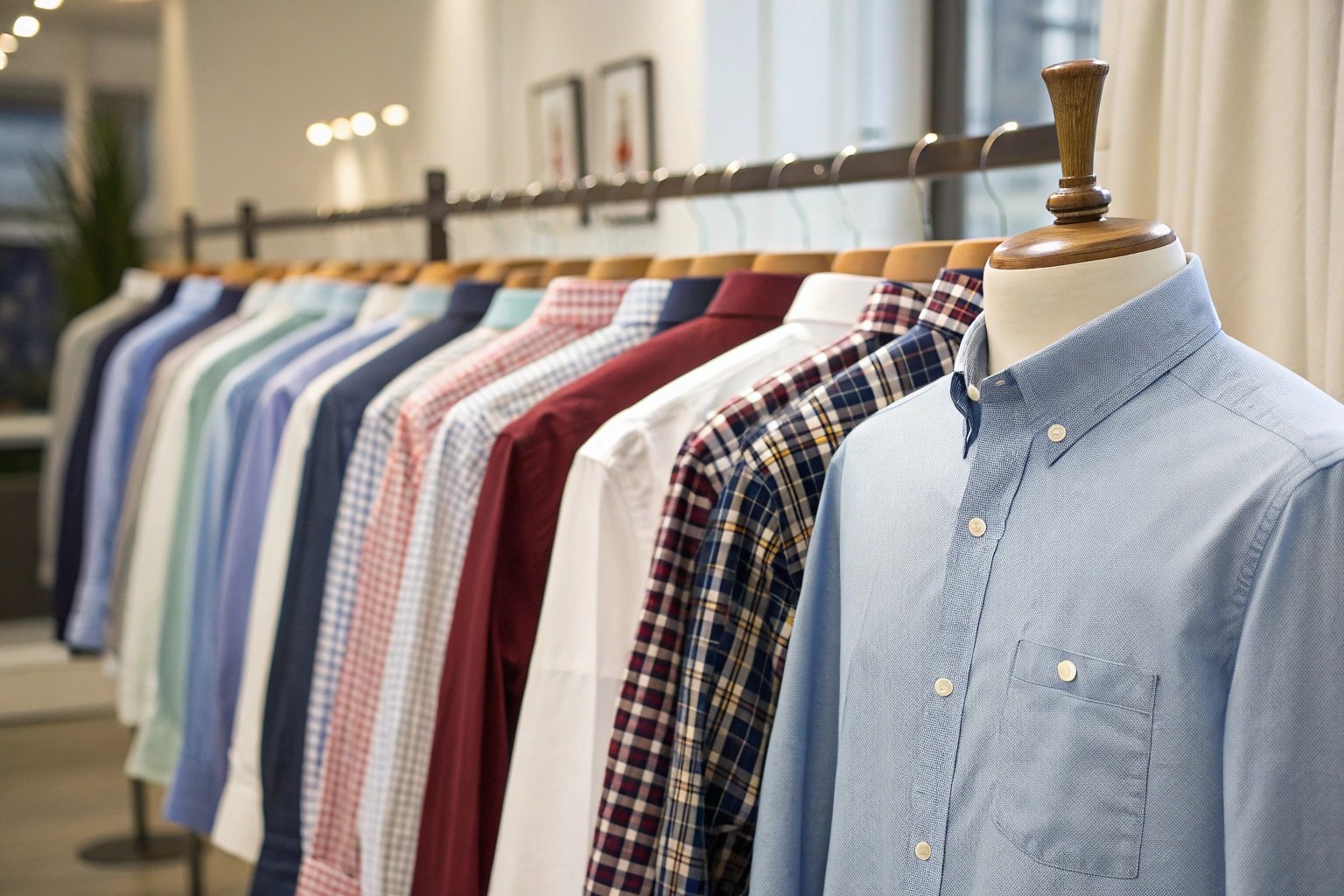
For fashion brands and apparel buyers, developing a well-segmented shirt category is essential to meet diverse end-user needs. From classic Oxford shirts for business clients to laid-back Aloha styles for leisure, offering tailored shirt solutions by gender and occasion can increase sales conversion and brand relevance across channels.
How to differentiate male and female shirts?
The most basic difference between male and female shirts lies in construction. But the deeper distinctions are about silhouette and lifestyle alignment.
Men’s shirts typically have straighter cuts, broader shoulders, and button left-over-right; women’s shirts are often tapered at the waist with bust darts and button right-over-left.
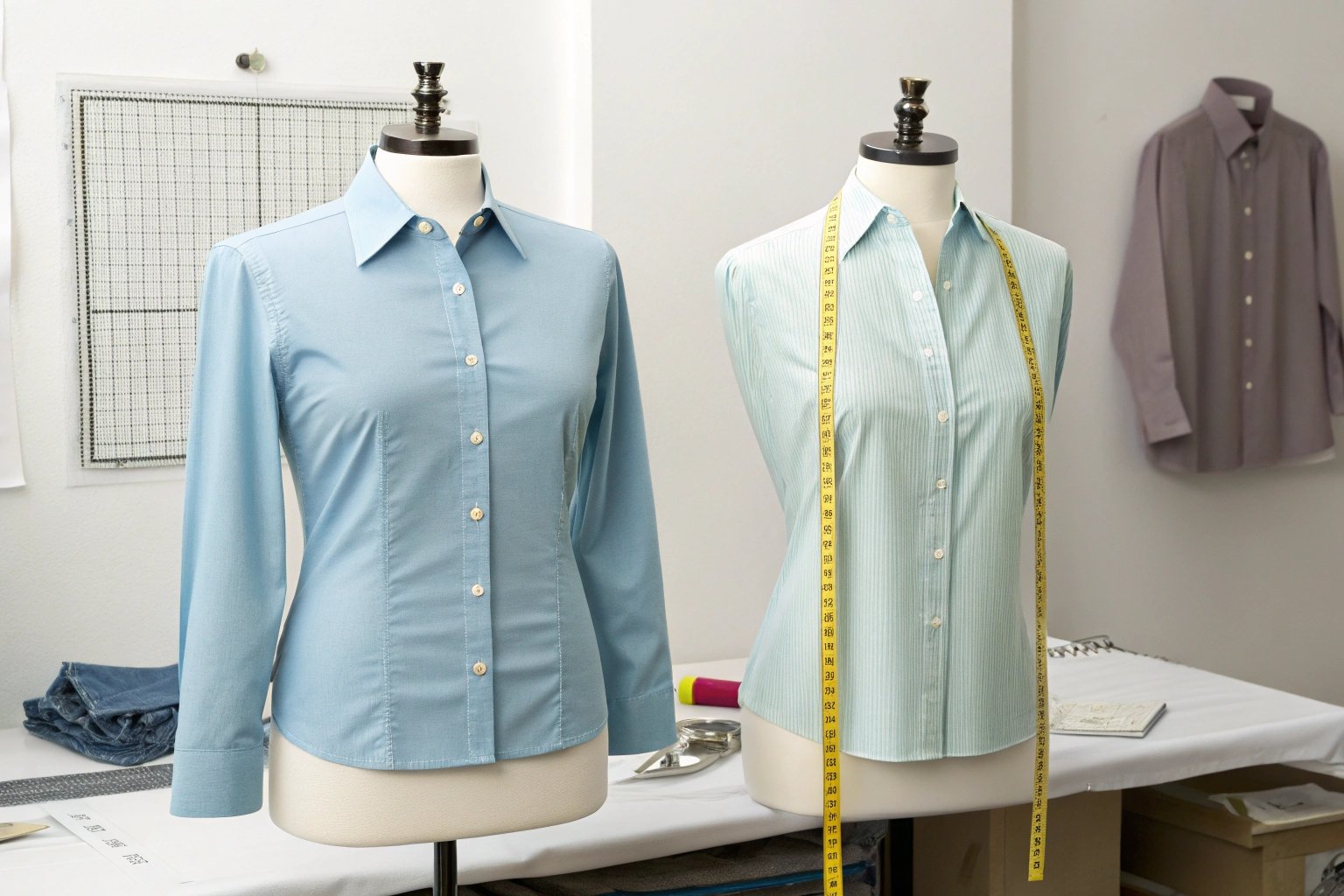
Key Design Differences
| Feature | Men’s Shirt | Women’s Shirt |
|---|---|---|
| Cut | Straight, boxy, relaxed fit | Fitted waist, bust darts, curved hem |
| Button Direction | Left-over-right | Right-over-left |
| Shoulder Width | Broader to fit typical male build | Narrower for shoulder line proportion |
| Sleeve Length | Longer armhole depth | Shorter sleeves or capped shoulders |
| Fit Philosophy | Utility and structure | Form-following, often style-enhanced |
From a production standpoint, these differences require separate grading rules, pattern construction, and often distinct marketing visuals. For unisex brands, balancing these traits without losing identity is key.
What are the types of shirts for men?
For men, shirts fall into several core categories based on formality, fabric, and construction. Understanding these types helps buyers align products with retail channels or client lifestyle profiles.
Common types of men’s shirts include dress shirts, Oxford shirts, polo shirts, Cuban collar shirts, flannel shirts, denim shirts, and henleys.
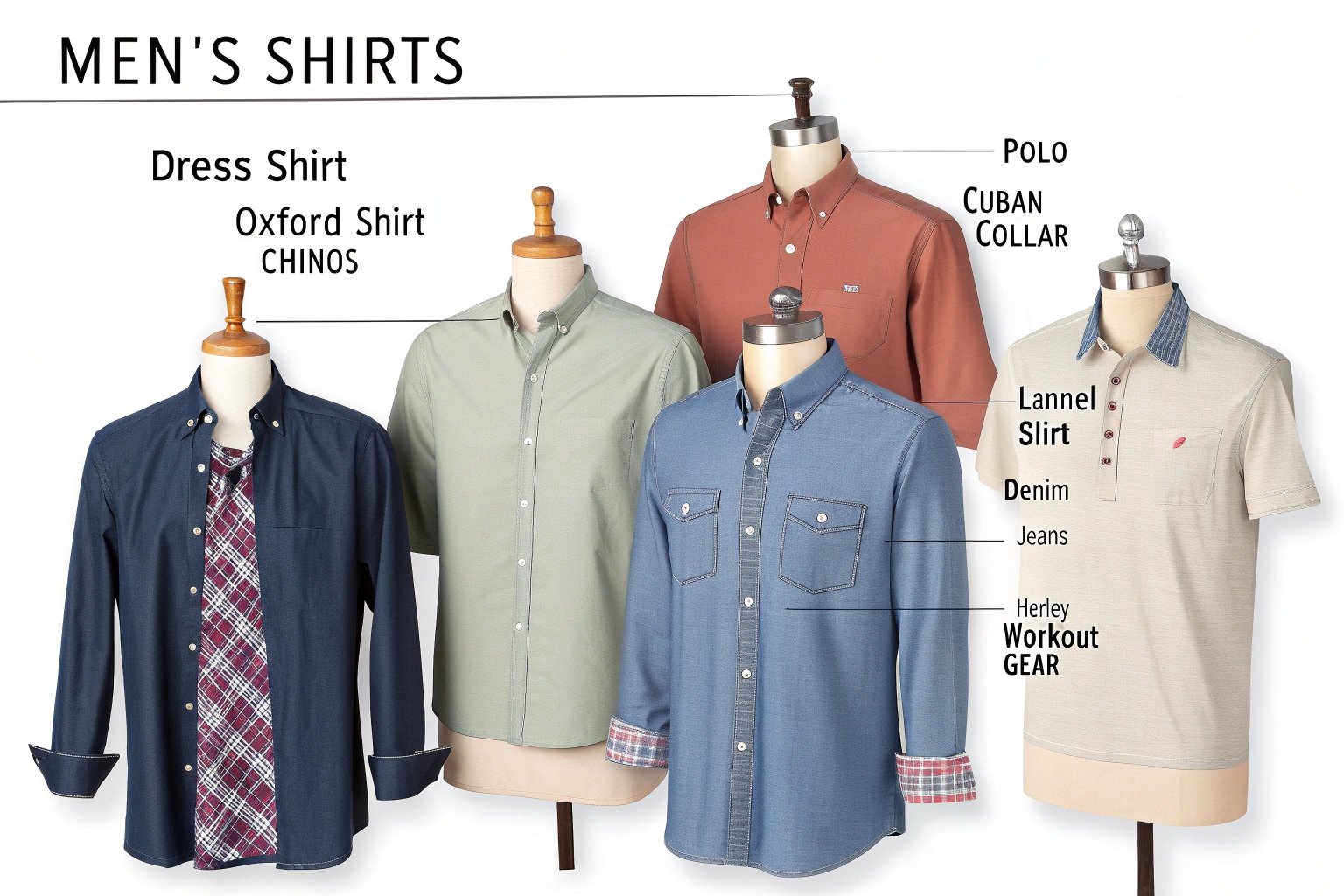
Men’s Shirt Categories
| Shirt Type | Description | Typical Use Case |
|---|---|---|
| Dress Shirt | Structured, long-sleeve, formal collar | Business wear, formal events |
| Oxford Shirt | Heavier weave, button-down collar | Business casual, daily office wear |
| Polo Shirt | Knit collar, short sleeves, often with logo | Casual Fridays, golf, team uniforms |
| Cuban Collar Shirt | Open, soft collar; relaxed drape | Resort, vacation, summer events |
| Flannel Shirt | Brushed cotton, plaid pattern | Fall layering, outdoor workwear |
| Denim Shirt | Indigo or washed denim fabric | Casualwear, streetwear |
| Henley Shirt | Round neck with short placket | Athleisure, base layering |
From a sourcing view, these shirts also differ in construction method (e.g., single-needle vs double-needle stitching), interlining usage, collar types, and placket structure—each affecting garment cost and perceived quality.
Is there a difference in men’s and women’s t-shirts?
Though often considered unisex, T-shirts also carry clear differences when designed for men versus women—especially in commercial lines targeting fit and branding.
Yes. Men’s T-shirts have broader shoulders and a straight torso cut; women’s T-shirts are often more fitted at the waist and shorter in length, with softer sleeves or cap styles.
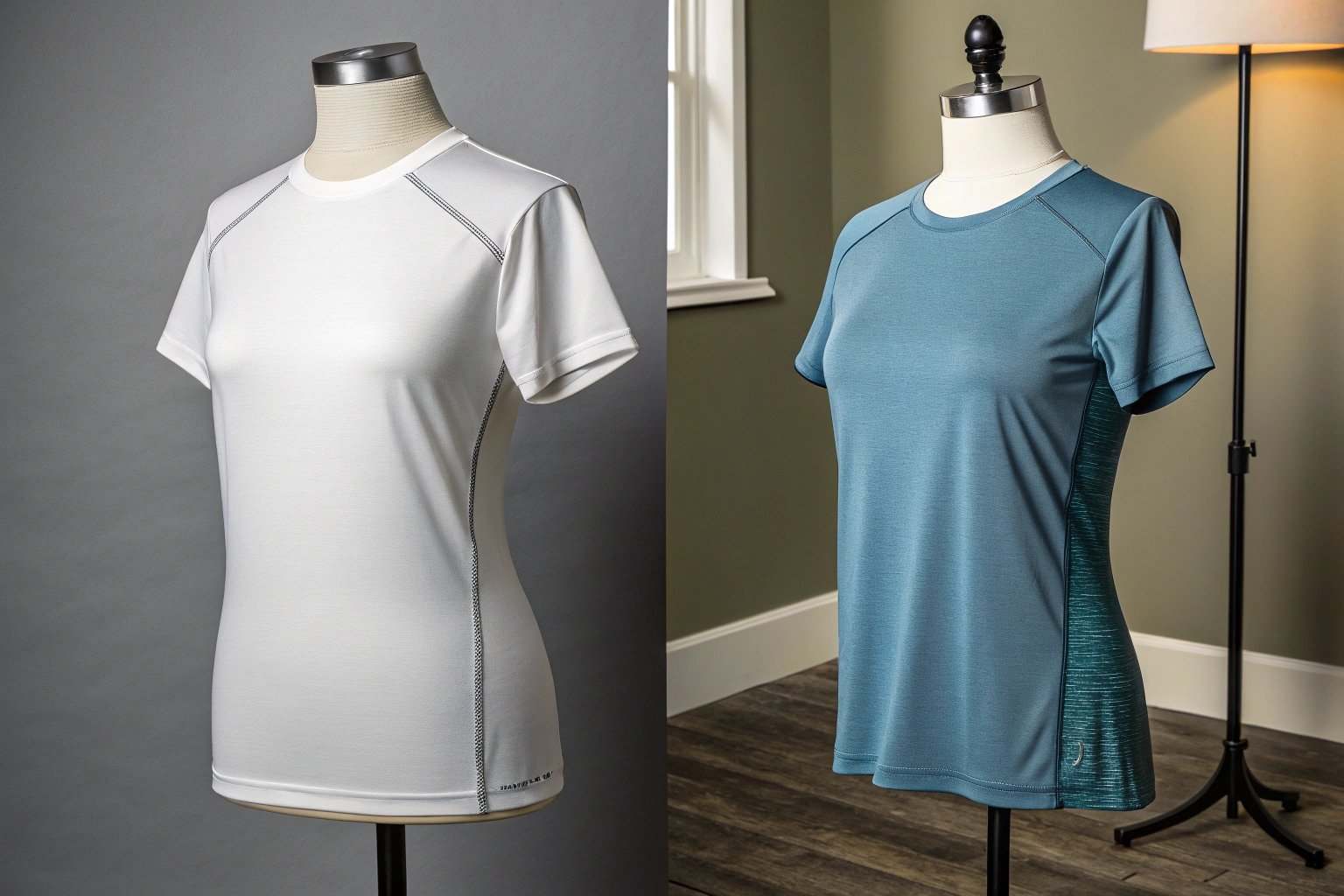
Functional and Marketing Considerations
| Feature | Men’s T-shirt | Women’s T-shirt |
|---|---|---|
| Silhouette | Straight, boxy | Tapered waist, shorter length |
| Sleeve Shape | Wider, longer | Fitted, sometimes capped |
| Neck Style | Crew or V-neck | Can include scoop or boat neck |
| Graphic Placement | Higher across chest | Often resized lower for female proportions |
For brands selling to both genders, it’s advisable to differentiate product photography, model fit specs, and even product names to improve search performance and customer conversion in DTC and B2B channels.
How many types of women shirts are there?
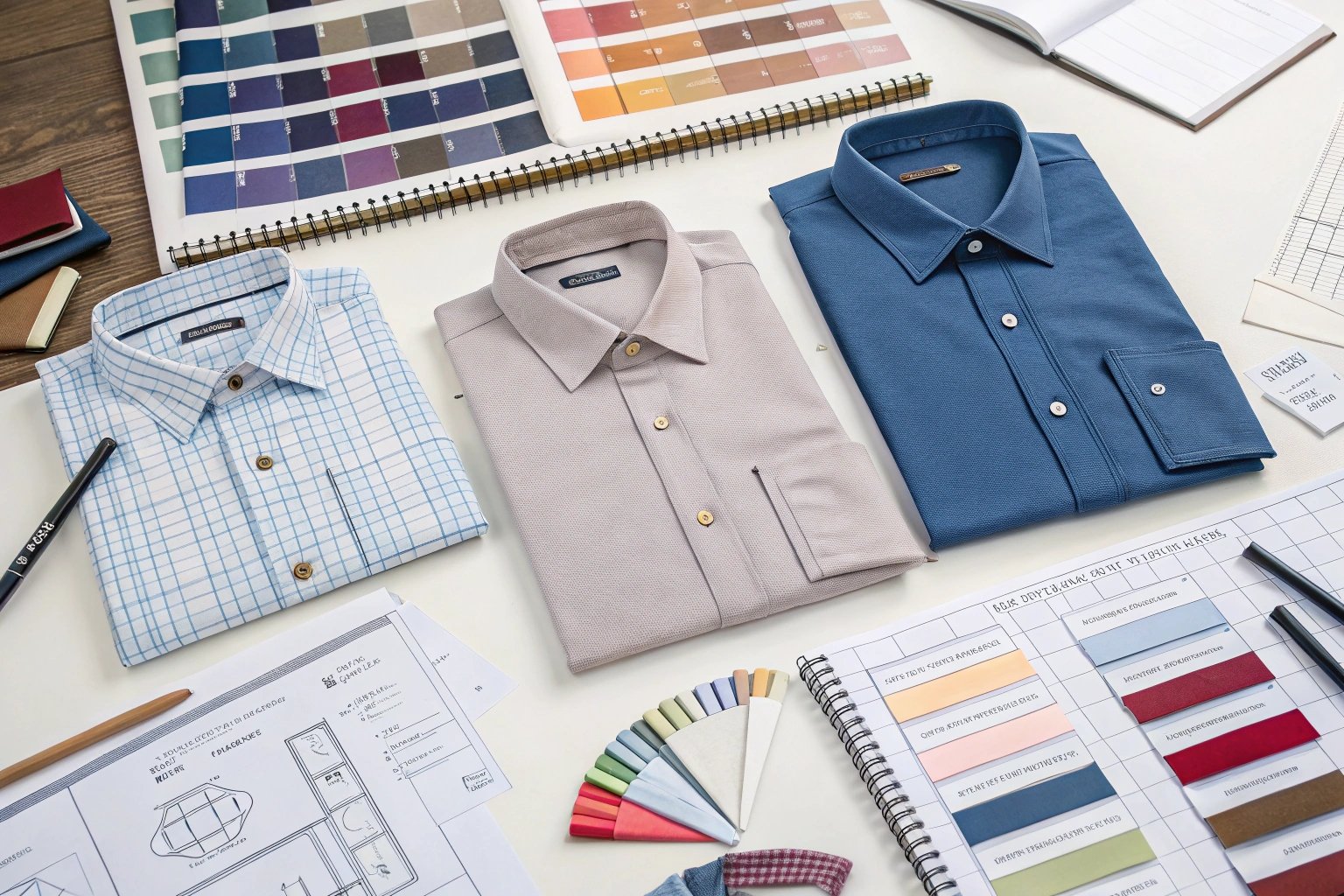
Women’s shirts are far more diverse in silhouette and design details than men’s, as they align more closely with fashion cycles and trend variation. For wholesale brands or retailers, offering a curated range with functional variety is key to capturing different market segments.
There are at least 8 core types of women’s shirts—ranging from classic button-downs to trend-led designs like peplum or off-shoulder tops.
Women’s Shirt Categories
| Shirt Type | Description | Typical Use Case |
|---|---|---|
| Button-Down Shirt | Classic collar and placket, tailored or relaxed fit | Office, smart casual |
| Blouse | Lightweight, often pleated or printed | Professional or social occasions |
| Tunic | Long-line, relaxed cut | Modest wear, summer casual |
| Peplum Shirt | Fitted waist with flared bottom | Fashion events, semi-formal |
| Crop Shirt | Short hem, often boxy cut | Streetwear, trend-driven retail |
| Off-Shoulder Shirt | Open neckline with elastic band | Party, summerwear |
| Wrap Shirt | Adjustable fit, overlaps at waist | Maternity, stylish casual |
| Henley/Long Sleeve | Casual neckline, soft fabric | Layering, athleisure |
From a manufacturing perspective, these shirts require multiple sleeve constructions (e.g., raglan, bishop, balloon), different necklines (e.g., mandarin, scoop, ruffle), and often varied finishing (e.g., piping, embroidery, pin-tucking).
Building Gender-Responsive Shirt Collections
Especially in wholesale and private-label partnerships, offering shirt lines that clearly address gender, fit, and use-case scenarios improves buyer decision-making and enhances category authority.
Strategic Product Planning
- Occasion Mapping: Map shirt types by use case—formal (Oxford), smart casual (polo), relaxed (Cuban collar)—and repeat the same logic in women’s collections with coordinated tones and trims.
- Material Differentiation: Use structured cotton blends for businesswear, washed poplin for summer lines, and knit jersey for weekend comfort.
- Fit Customization: Develop parallel size sets (e.g., men’s M vs women’s M) to reflect real fit data, not just nominal sizing.
- Detailing for Identity: Offer gender-differentiated elements like hem shape, collar finish, button colors, or yoke seams to increase perceived uniqueness.
Conclusion
Shirts remain a timeless category with high commercial relevance. By understanding the design and functional differences between men’s and women’s shirts—and aligning styles with customer occasions and expectations—brands can build more intelligent, segmented, and sellable product lines.

